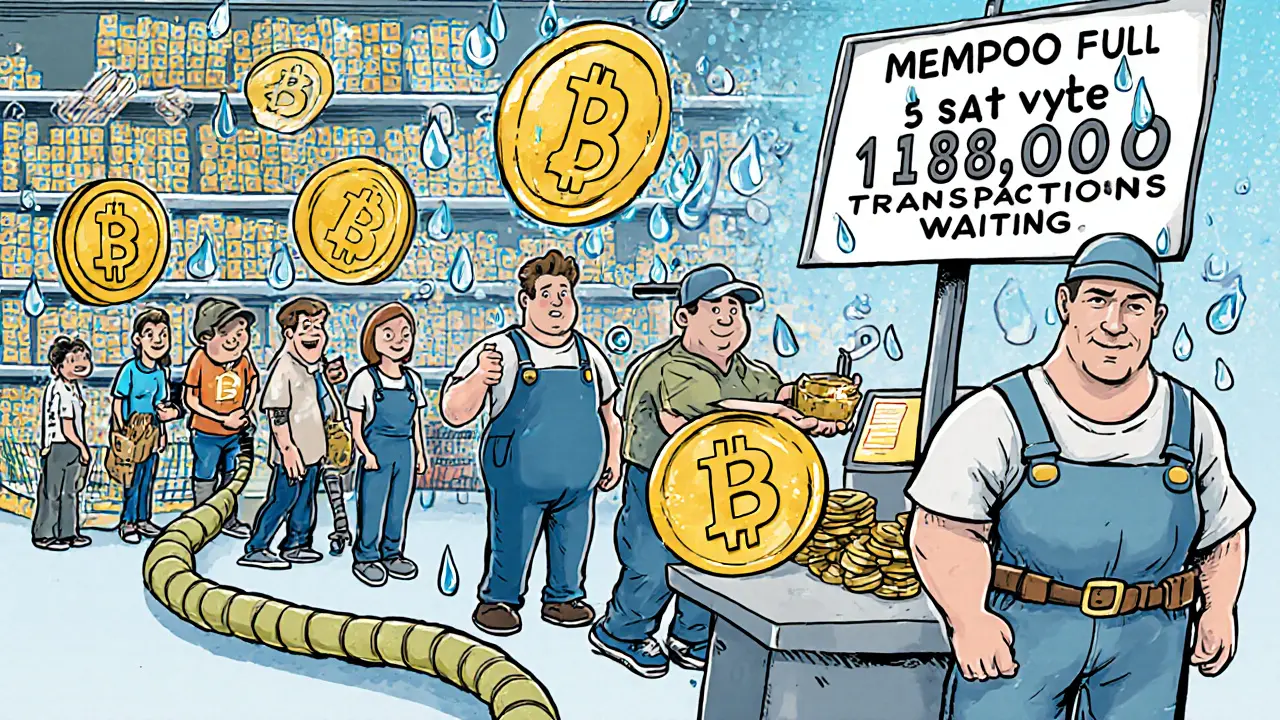Blockchain Congestion: Why Networks Slow Down and How to Avoid It
When you send crypto and it takes minutes—or hours—to confirm, you’re dealing with blockchain congestion, a situation where too many transactions compete for limited space in a blockchain’s blocks. Also known as network congestion, it happens when demand outpaces capacity, turning simple transfers into expensive, delayed waits. This isn’t a glitch—it’s a design limit. Every blockchain has a fixed block size and a set time between blocks. Bitcoin processes about 7 transactions per second. Ethereum handles around 15. When thousands of people try to swap tokens, stake ETH, or mint NFTs all at once, those blocks fill up fast.
What happens next? transaction fees, the cost you pay to get your transaction processed by miners or validators. Also known as gas fees, they rise automatically as users bid higher to jump the line. On Ethereum during peak NFT drops or DeFi launches, fees spiked over $100. On Solana, congestion is rarer—but when it hits, it can crash the whole network. network latency, the delay between sending a transaction and seeing it confirmed becomes painful. You click ‘send’, wait, check again—still pending. Meanwhile, your trade misses its price, your NFT sale stalls, or your DeFi position gets liquidated.
It’s not just about speed—it’s about reliability. If you’re staking on a PoS chain like Ethereum, blockchain scalability, how well a network handles growth without losing performance directly impacts your rewards. Slower blocks mean slower earnings. If you’re using a DEX like xExchange or Nimera, congestion can mean failed swaps or front-running bots stealing your trades. Even simple wallet actions like approving tokens can get stuck, locking your funds in limbo.
Some chains avoid this by design. Solana uses high-throughput architecture. Polygon and Arbitrum layer on top of Ethereum to handle off-chain traffic. But if you’re stuck on the main Ethereum chain during a surge, you’re at the mercy of the market. You can’t fix congestion—you can only work around it. Use lower-traffic times. Pick chains with lower fees. Set gas limits wisely. Watch for network alerts before you act.
What you’ll find here are real stories from users who got burned by slow networks, guides on how to pick the right chain for your use case, and breakdowns of how major blockchains handle—or fail to handle—this everyday problem. No theory. No fluff. Just what works when your transaction is stuck and your wallet is bleeding fees.
Learn how mempool size affects Bitcoin transaction speeds and fees. Understand congestion triggers, real-time monitoring tools, and how to avoid delays with proper fee settings and address types.
